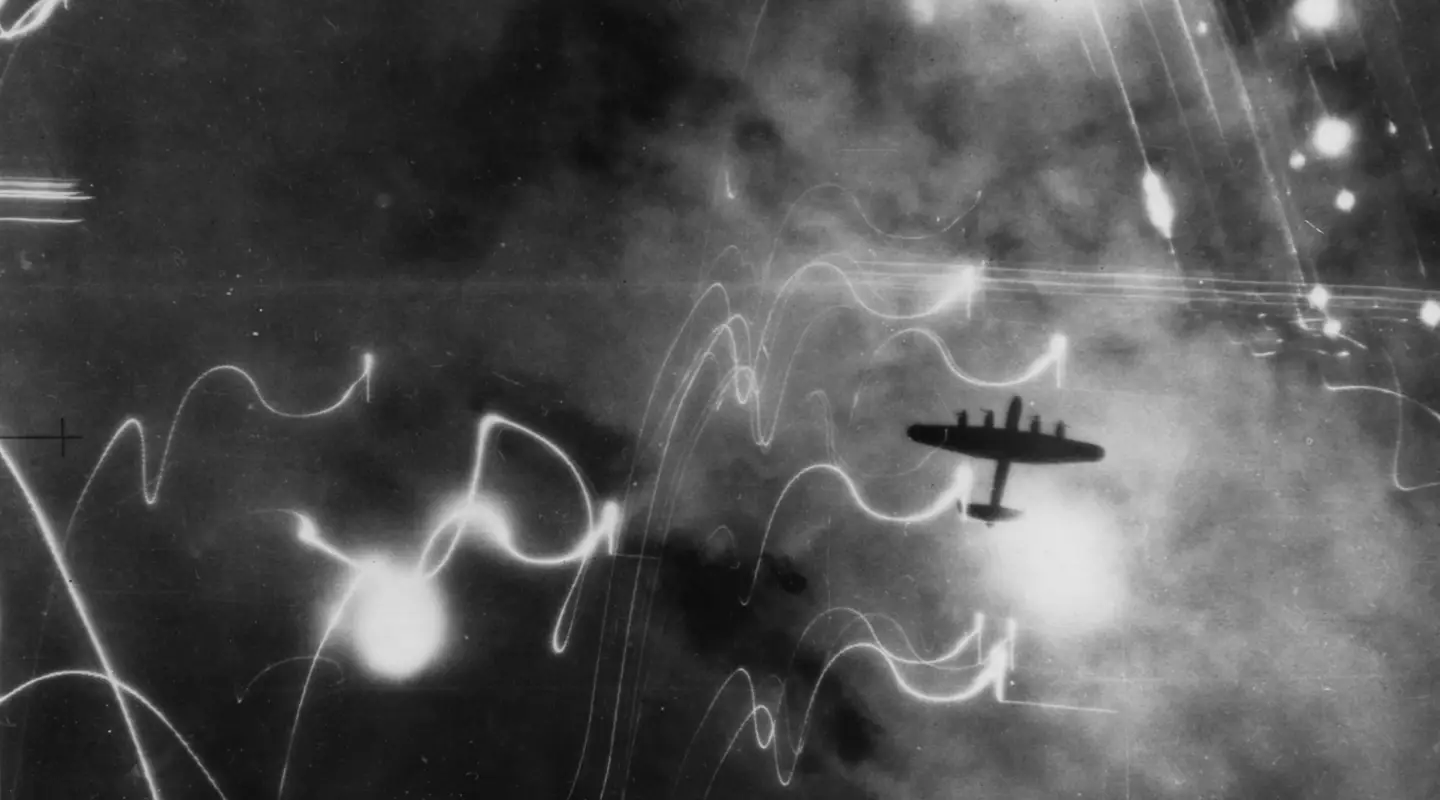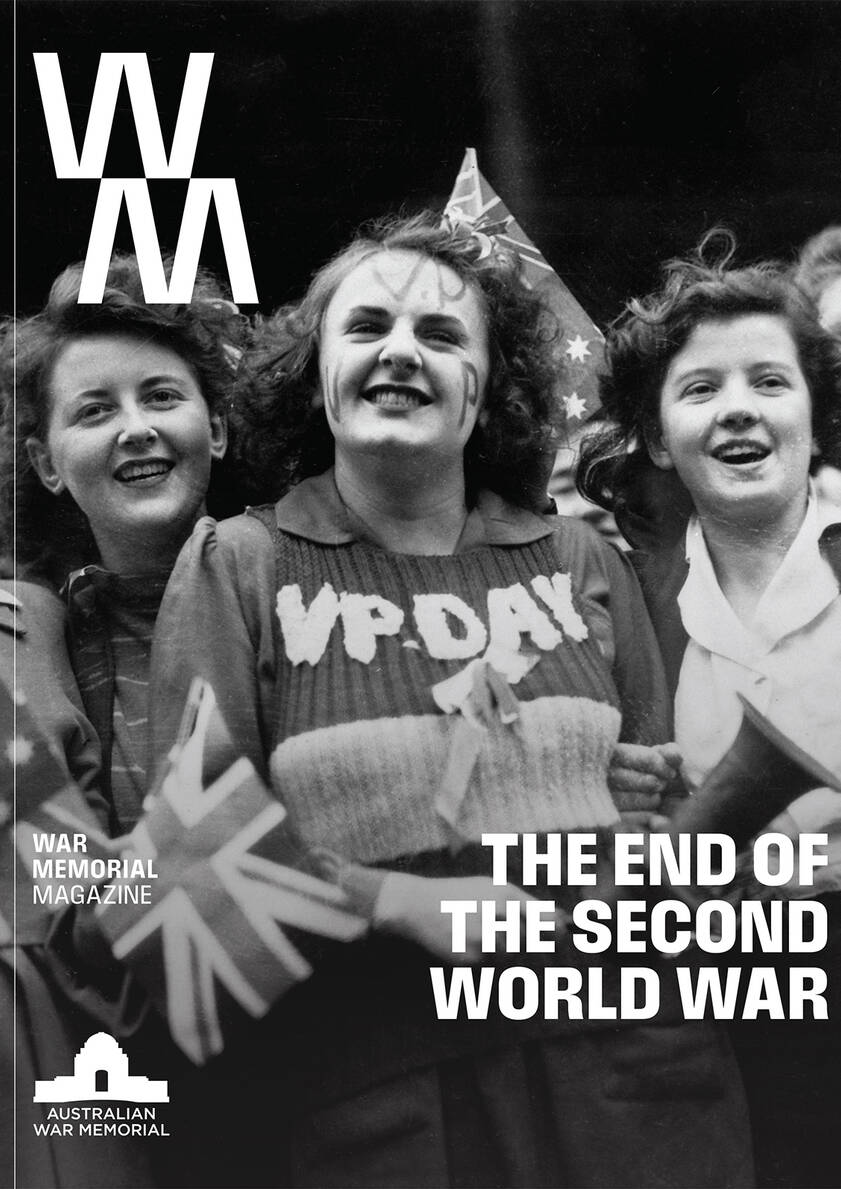More than 6,500 Australian airmen were killed in the European theatre during the Second World War. Casualty rates were extremely high, more than one in five; and many were listed as missing for years.
At 5.55 pm on 31 January 1944, on a quiet suburban street in the Melbourne suburb of Williamstown, Edwin and Hilda Barnes received what many wartime parents dreaded, a knock at the front door for the delivery of a telegram:
Regret to inform you that your son Pilot Officer Keith Omond Barnes is missing as a result air operation during the night 27/28 January 1944 STOP Known details are he was pilot of Lancaster aircraft detailed to attack Berlin Germany which failed to return to base presumably due to enemy action STOP The Minister for Air joins with Airboard in expressing sincere sympathy in your anxiety STOP When any further information is received it will be conveyed to you immediately
It would take years of investigation before Keith’s mother and father would receive the full story of what had happened to their son.
Living as we now do in the age of instant messaging, social media and global connectivity, the notion of not knowing the fate of a loved one for weeks, months or years on end is difficult to imagine. But for a generation of Australian families during the First and Second World Wars, it was common to live with the enduring sorrow and heartache of not knowing the fates of husbands, fathers, sons and brothers.
Although just 20 years old, Barnes was an experienced combat pilot and the captain of a No. 49 Squadron, Royal Air Force, Lancaster crew on its 23rd operation over enemy territory. Members of the squadron had been confident that Barnes’ crew were destined to complete an operational tour of 30 missions.
But Barnes’ Lancaster III, serial number JB 360, was one of 33 heavy bombers from RAF Bomber Command that had (to use the RAF expression) “failed to return” in the early hours of 28 January 1944 from the previous night’s raid on Berlin. The next day, on the other side of the world, a cypher was received at a Royal Australian Air Force (RAAF) office near the Melbourne Botanic Gardens in South Yarra, with a simple message that Barnes and his crew had been reported missing; this message was then sent on to the family in Williamstown.
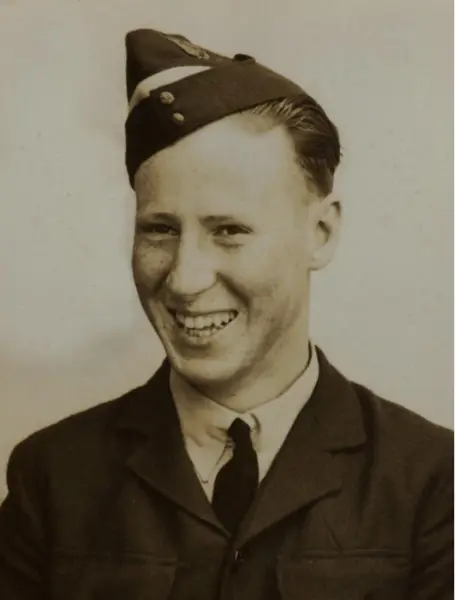
Portrait of Pilot Officer Keith Barnes. Courtesy of the National Archives Australia.
Accounting for casualties
Barnes was one of more than 6,500 Australian airmen killed in the European theatre during the Second World War. From the estimated 27,000 members of the RAAF who were posted to squadrons in Britain during the war, the attrition rate was therefore very high: more than one in five. Australian airmen are buried in more than 650 cemeteries across Europe and Britain. The names of the missing, or of those with no known grave, are commemorated on the Air Forces Memorial to the missing at Runnymede, overlooking the River Thames near London.
Britain’s Air Ministry took on responsibility for investigating the fates of the missing British and Commonwealth aircrews (and administering the affairs of the dead). A branch dedicated to casualties was established not long after the outbreak of war. Its administration quickly evolved to meet the accumulating needs and the growing realisation that the war would be long and costly in terms of aircrew lost. By 1942 a missing persons section had been established in an office above a department store on London’s Oxford Street.
It must have been a difficult job for the men and women who worked there. Constantly dealing with sensitive information about the dead (often with gory descriptions of recovered bodily remains), staff would have needed resilience, and to show thoughtfulness and sensitivity when corresponding with families. The London office also had an open door policy, meaning families could – at any time – call by telephone, or visit in person, to enquire about a case.
Finding missing aircrew meant using the best information they could get to determine the time and location of death, and then finding a grave (if there was one) or crash site. They needed know about bodies that had been recovered and identified; the bodies had often suffered severe trauma from the impact of the crash. Air Ministry staff also documented any eyewitness accounts. This information could come first from other Allied aircrews who might have witnessed the crash, or from casualty lists compiled by the Germans and sent to Britain via the International Red Cross (a very courteous level of co-operation during a brutal conflict). More detailed accounts might later filter through from any surviving crew members held as prisoners of war.
RAAF graves at Bas Oha Communal Cemetery, Belgium
Once areas of Europe were liberated, beginning in June 1944, and then in occupied Germany after the war, investigators located and excavated crash sites for remains, identifying graves and interviewing eyewitnesses. Recovered bodies underwent examination for distinguishable features (height, hair colour, dental records). For aircrew who had been buried in local cemeteries in Germany, all bodies were exhumed to be identified and re-interred in official Commonwealth War Graves cemeteries. In some cases the exhumation of a body revealed suspicious wounds (such as a single gunshot wound in the skull) that indicated an airman may have parachuted to ground safely and been killed after capture. Such cases therefore triggered an investigation into war crimes. News that sons had been murdered caused further distress to already traumatised families.
Recovered identity disks or other personal effects could be used to identify remains. With Australian aircrew, the darker blue uniform was an identifier of nationality, as was the “Australia” flash worn on the shoulder. Such information proved useful in cases where there was just one Australian among a crew buried in a single communal grave (which was common). Aircrew also often labelled their clothing with name and/or service number for their laundry services, which could help with identification if the labels survived.
Once information about an Australian airman was gathered in London, all updates were sent to RAAF Headquarters at Melbourne’s Albert Park. From there the cases were administered by the Department of Air and the RAAF, where personnel would have included members of the Women’s Auxiliary Australian Air Force. Casualty offices were established in Little Collins Street in the city of Melbourne, and in South Yarra. The Army had its office in nearby Prahran, located on upper floors above a department store on Chapel Street. From these offices, staff corresponded with the deceased servicemen’s Australian families.
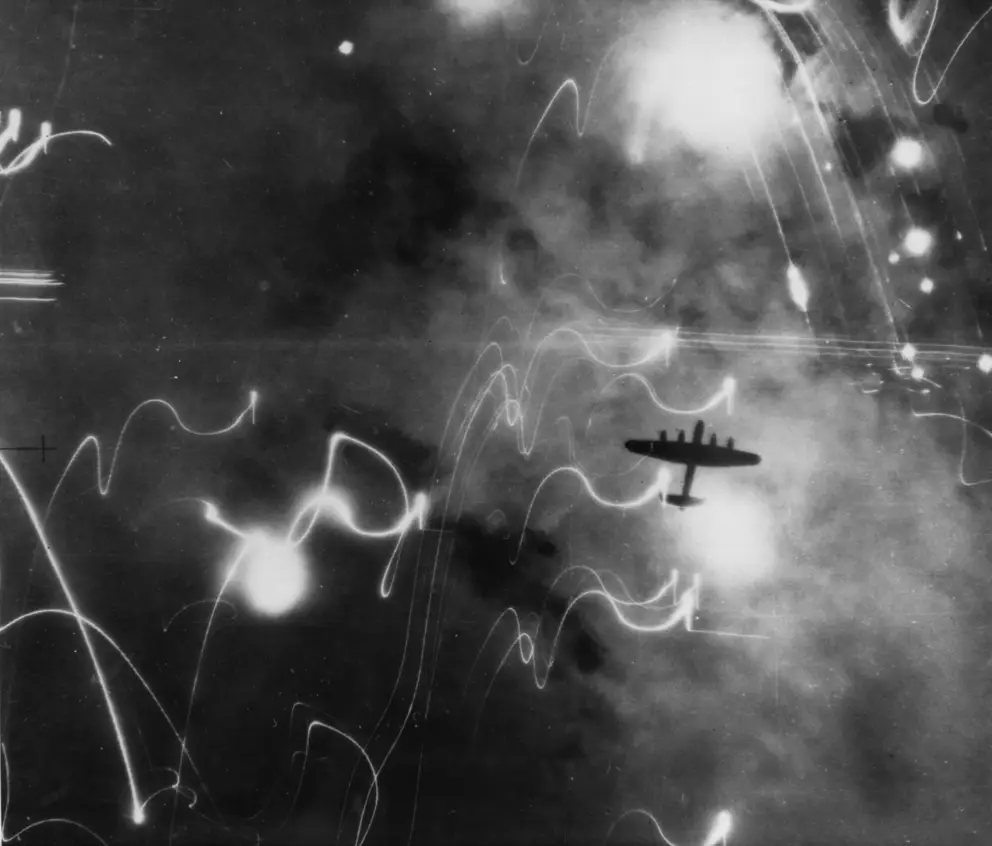
Lancaster bomber aircraft during an air attack on the city of Hamburg, Germany. c. December 1942
Keith Barnes case
In the case of Pilot Officer Barnes, it took another six weeks from when his parents first learned their son was missing until an update was provided. On 16 March 1944, a second letter informed them of a change of classification in the case.
“I deeply regret to inform you that your son … previously reported missing as a result of air operations … is now reported missing but believed to have lost his life … Permit me to extend to you again the sincere sympathy of this department in the anxiety you have suffered.”
In August and September, the Barnes family then received letters stating “the death of your son … has now been presumed for official purposes.” The new information in Barnes’ case had come from German lists provided to the Red Cross. In December 1944, Mrs Barnes was sent a letter that included statements from two of three surviving crew members who were prisoners of war. They both reported that Pilot Officer Barnes had remained at the controls of the Lancaster alongside the flight engineer, who was assisting Barnes with his parachute when the aircraft exploded. Both crewmen declared, “the German authorities state that Pilot Officer Barnes was killed.”
Despite this information, and without official confirmation, the “presumed” status of her son’s fate ensured that Mrs Barnes never gave up the faint hope that her son was alive. Eighteen months after the incident, after the war in Europe had finished, she wrote to the casualty office:
Dear Sir,
Our son Pilot Officer Keith Omond Barnes DFC has been missing since the 27/28th Jan 1944 over Germany …
All our notifications from the Air Ministry have been ‘presumed dead or killed’ never a decided statement, we are still hoping he may be found in hospital somewhere … He may have lost his memory or even [be] disfigured by burns. I have a strong feeling he is not gone, being his mother I want to do everything possible to search for him …
I am enclosing a photo of him. I thought it might help if he has lost his memory. You will have an idea of what he looks like. He was 20 years 10 months of age at his presumed death … If you could find our boy for us we would be ever grateful.
He is our baby.
Thanking you in anticipation from a very grateful but sad mother.
Hilda E. Barnes
30 June 1945
The British Air Ministry’s office in London had certainly been working on the case, but with tens of thousands of British and Commonwealth aircrew killed and missing, the investigations dedicated to missing individuals took a long time.
With the war over, investigators were now searching on the ground in Germany. A grave marked with the names of Barnes, his British flight engineer Sergeant George Greenwood, and Canadian tail-gunner Warrant Officer John Hill, was located in the village of Ahrensdorf near Berlin. The local Burgomaster, Herr Kempe, had been an eyewitness, corroborating the statements by the surviving crew that the Lancaster had exploded mid-air. Kempe reported it had been a clear night, with a lot of night fighter activity, and that Barnes’ Lancaster had been shot down by one of them. Kempe had overseen the burial of the remains of the dead aircrew in the community cemetery behind the church, and local parishioners had been taking care of the grave. The grave was marked with a single cross. The report noted of the cross, “it was well made, varnished” and carved with the names of the crew (though their three nationalities were listed incorrectly). Twelve months later, in October 1948, the bodies were exhumed to be moved to the Berlin British and Commonwealth War Cemetery. The “Australia” shoulder flash and dark blue uniform officially identified Barnes.
In January 1949, just short of five years after the incident in which he was reported missing, Hilda Barnes received the final report confirming her son’s fate. It included the above findings and provided information about the cemetery and the specific plot location of Keith’s grave. Twelve months later, in January 1950, the Barnes were sent a photograph of his grave, closing six years of correspondence.
Stories of the missing
For the parents of missing aircrew never to be found, it could take several years before they received an official confirmation of death. The Air Forces Memorial to the missing at Runnymede overlooking the River Thames lists the names of more than 1,300 members of the RAAF who remain missing or have no known grave. This number includes the names of 70 per cent of the 652 members of the RAAF to be killed while serving with RAF Coastal Command, many of whom were lost over the sea.
Such was the case for the twelve crewmembers of a Sunderland flying boat of No. 10 Squadron RAAF, lost in the Bay of Biscay on 11 August 1943. Ernest Matthews, the father of Sergeant William Matthews from the town of Denmark on the south coast of Western Australia, received a letter dated 19 January 1949:
The letter added that in the absence of a grave, William’s name would be commemorated on a planned memorial to the missing. The Runnymede Memorial, listing the names of 20,000 missing British and Commonwealth aircrew, would be unveiled by Queen Elizabeth II in October 1953.
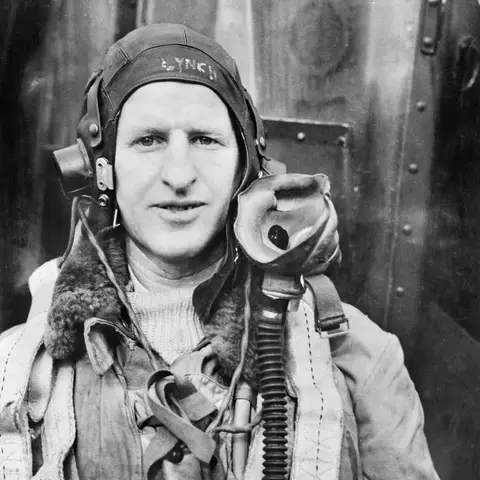
Several months after Flying Officer Thomas Lynch was first reported missing, his mother received a letter from him: the first news she’d received that he was alive. Photographer unknown.
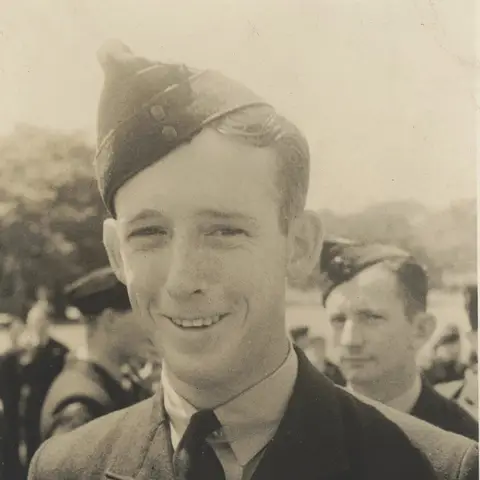
Flight Sergeant Jack Wormald. AWM 2018.793.3.3
Some families of airmen reported missing were lucky enough to receive good news. Flying Officer Thomas Lynch of No. 460 Squadron RAAF had been the only survivor when his Lancaster was shot down during a raid on Friedrichshafen on 27 April 1944. Five months after he was officially reported missing, the first news his mother, Anne Lynch, received that he was alive came not (as might be assumed) through the official channel of the Casualty Office; it came from a German hospital bed, in a letter written by Thomas himself that arrived at the family home in Ipswich, Queensland.
Thomas told his mum (who instantly recognised his handwriting) that he was alive, was a prisoner of war, but had had his right leg amputated and was hoping to be repatriated soon. His mother immediately wrote to the casualty section with this news so they could update her son’s file. She added a note to one of her letters: “thanking you for your kindness to me in my anxiety”.
Thomas Lynch recalls his letter home
Well, I'm in the position that I can't remember anything from the event at all. I had a complete loss of memory which seemed to affect me from before we took off till after we got shot down. It’s a terrible blank to this day.
I woke up in a hospital in Baden... I was in the theatre one day for treatment and the doctors - there was two doctors there - and one said to me, 'Have you written to your parents?'. I said, 'No', and another doctor said, 'He's not allowed to write', and the senior doctor said, 'I'll give you paper and a pen and you can write to your parents.'
So I wrote this letter and he must have posted it because my mother, in Ipswich, Queensland, received this letter, in a very dilapidated condition, about six months later and she notified the authorities that I was alive.
[partial] oral recording of Thomas Lynch, 2 February 1988 AWM S01299
Some correspondence to families from the Casualty Section provided a small degree of comfort with a note that local citizens in France, Belgium or the Netherlands had adopted the graves of their loved ones. Flight Sergeant Jack Wormald, 21, was buried in the village of Grootegast in the Netherlands, where his Halifax was shot down during a raid to Berlin in February 1944. The correspondence to his parents, William and Hilda from Dulwich Hill in Sydney, assured them that the mayor of Grootegast wished to pass on the message that their son’s grave was being tended and cared for. The Wormalds later received pressed flowers from their son’s grave, as well as photographs, from a Mrs Hardinger, who cared for Jack’s grave.
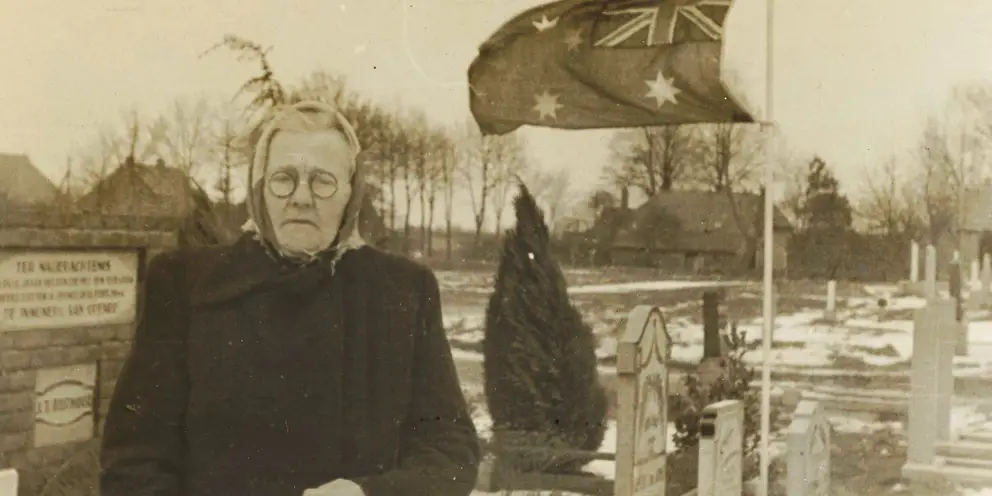
Mrs Hardinger cared for the graves of Allied aircrew, including Jack Wormald, in her local churchyard cemetery in the Netherlands. AWM 2018.793.3.35
Reactions by families
Given the stresses and strains on parents of missing and killed aircrew, the various ways that people processed or responded to grief are understandably visible within the records. One father from Queensland, whose son had been killed when his Hampden was shot down over Hamburg in November 1941, wrote several angry letters to the Casualty Office about a range of matters. In one, written in 1948, he wrote,
“it is [a] very disgusting realization for parents to know that their sons’ graves in an enemy country, buried by the enemy, have not been checked or verified after 7 years.”
In fact, the father had been given the exact details of his son’s grave two years earlier. He would not have realised the level of detail to which investigators must have gone in order to confirm the location of his son’s grave in Germany after the war had ended. Graphic reports from exhumations were not shared with families, so as not to cause further distress.
At first he was reported missing, but his fate was confirmed when the lone survivor of the crew returned to Australia in 1945, after more than three and a half years as a prisoner of war, and provided an eyewitness account.
Sergeant Garet White, No. 1 Squadron RAAF, was the wireless operator in a Hudson aircraft that crashed into the sea while attacking Japanese shipping off southern Thailand on 8 December 1941, the first day of the war in the Pacific. His mother, living in Adelaide, refused to believe that her son was dead. At first he was reported missing, but his fate was confirmed when the lone survivor of the crew returned to Australia in 1945, after more than three and a half years as a prisoner of war, and provided an eyewitness account.
Despite this testimony, Myrtle White wrote several times to the casualty section (and as late as 1952), stating her belief that her son had survived. She knew this because of what she had heard, through a spirit medium, from the spirit of her late husband, Cornelius, who had died before her son went to war. She believed that Garet had been rescued by local people, or by an American submarine, and had been taken to America and was suffering from amnesia following the crash. In this case, despite the eyewitness testimony, the RAAF reached out to their American counterparts so as to assure Mrs White that there was no evidence to support her belief.
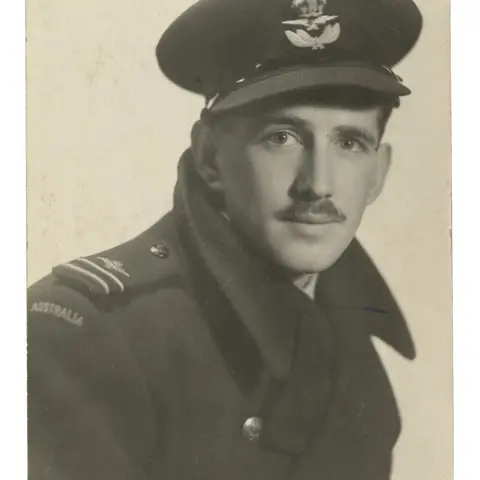
Portrait of Squadron Leader John Holmes
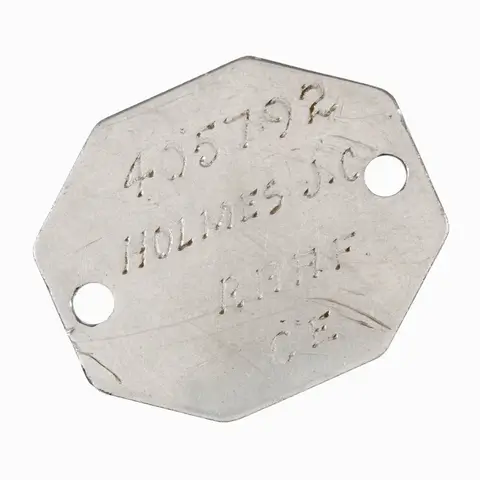
Squadron Leader John Cecil Holmes’ identity disc. It was found by a farmer while ploughing a field on the site of the old RAF Binbrook airfield in Lincolnshire, England.
Some parents showed great empathy for the staff working in the casualty branches of the services, and despite the tragedy of the death of their sons, expressed remarkable gratitude in their correspondence. Ivan Holmes, from Albany Creek north of Brisbane, was the father of Squadron Leader John Cecil Holmes of No. 460 Squadron, whose Lancaster failed to return following a raid on Chemnitz on 4 March 1945. Replying to the news that his son was missing, Mr Holmes wrote:
“I have acknowledged receipt of War Casualty Telegram in connection with my son, Squadron Leader J.C. Holmes, who is reported missing over Germany … I have carefully noted all the information contained therein … My wife and I would like to express our appreciation of the thought and sympathetic circumstance in which the sad news has been conveyed to us.”
Closing his correspondence with the department in September 1949, Mr Holmes wrote:
I have acknowledged with many thanks receipt of the Illuminated Scroll in honour of my late son Squadron Leader J.C. Holmes DFC, also the receipt of a photograph of his grave at Limmer in Hannover which arrived some weeks ago. I must apologise for not having acknowledged it sooner. My wife and I would like to express our appreciation of the manner in which the whole sad business has been dealt with by the Department. In all the transactions which have taken place since our boy was listed “Missing” we have felt that the authorities have taken particular pains both to express sympathy with us in our great loss and to do honour to the memory of a gallant airman. This attitude has been a source of particular comfort to us. I can assure you that the Scroll just received by Command of His Majesty will become a much valued family heirloom.
The address on the Holmes family correspondence shows the family property had been named “Binbrook” in memory of their son – Binbrook being No. 460 Squadron’s Lincolnshire base from which their son departed on his final flight.
The stories in this article have been compiled from casualty files held by the National Archives of Australia, which have been made easily accessible – alongside service records – by digitisation and availability online. These records document the bureaucracy created around the dedication to accounting for missing aircrew. They provide a window into the nature of the task, often dealing with missing people in foreign countries, with each record preserving a family’s anxieties, fears, and emotions, and the government’s response. What we cannot see in these records, and what remains a large unknown – looking back from a time when we are becoming more aware of the effects of vicarious trauma – is what impact this effort had on the dedicated men and women working for years on these case files. Their diligent work was unglamorous and unheralded, and yet was crucial in providing much-needed relief and support to service families.
